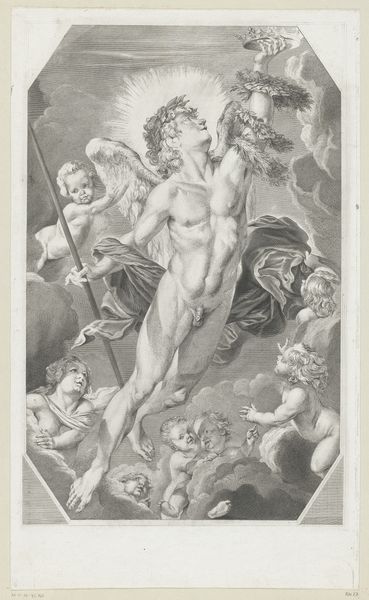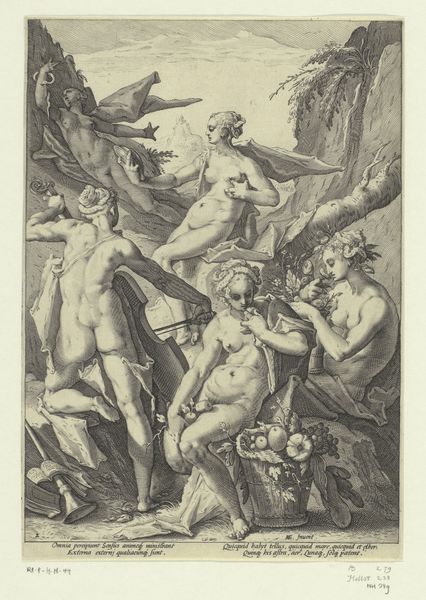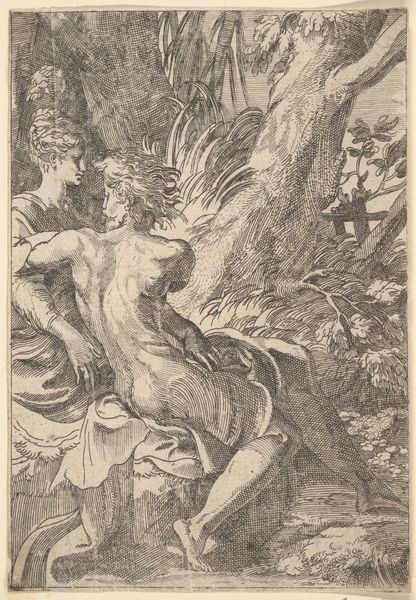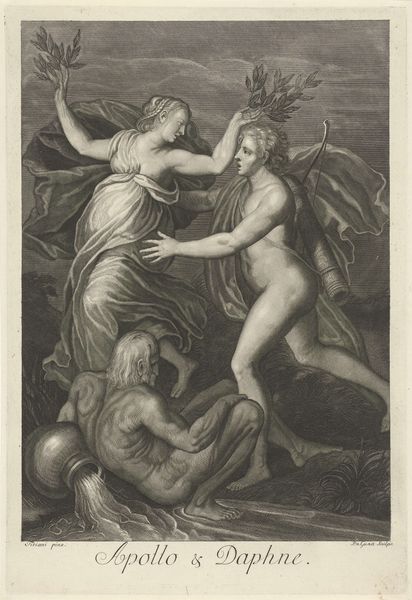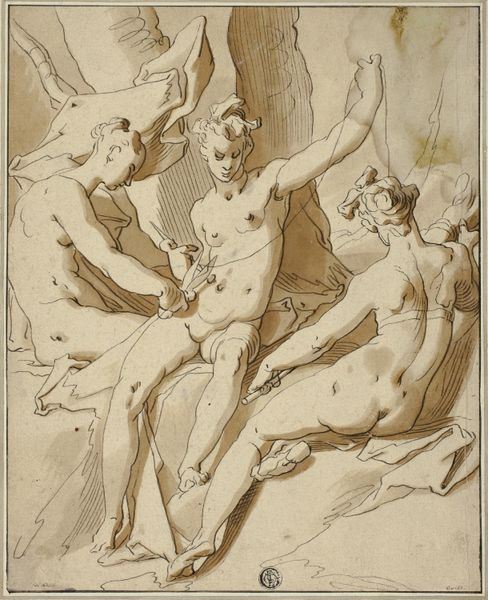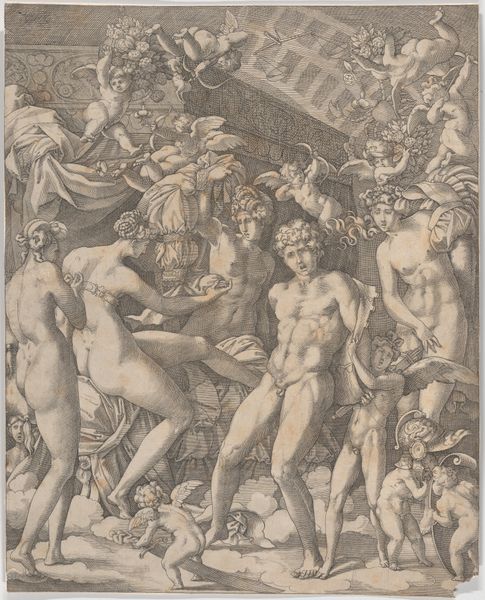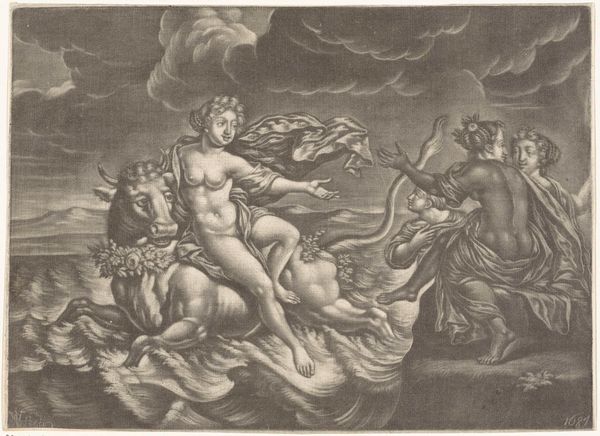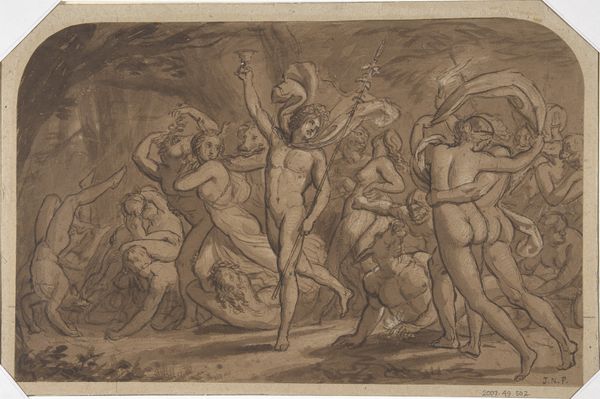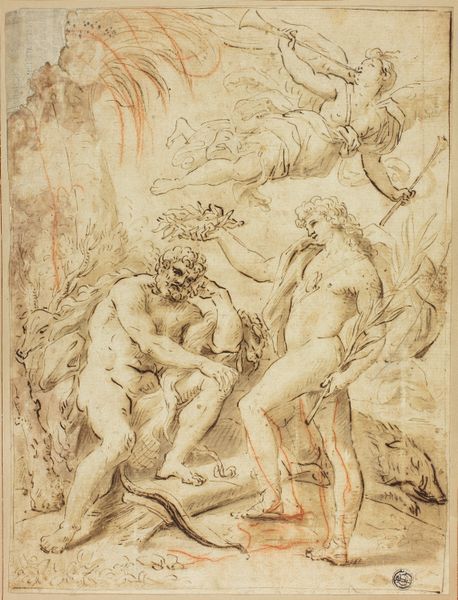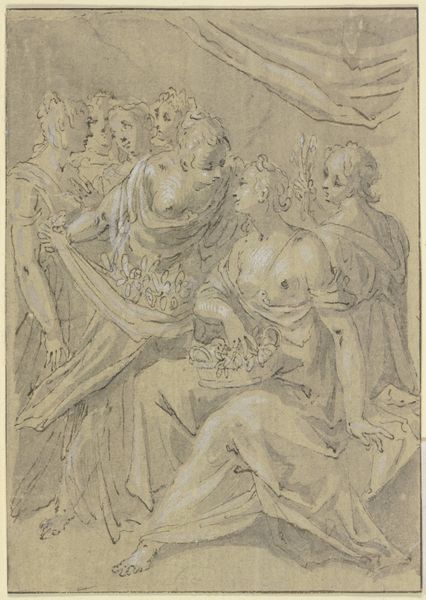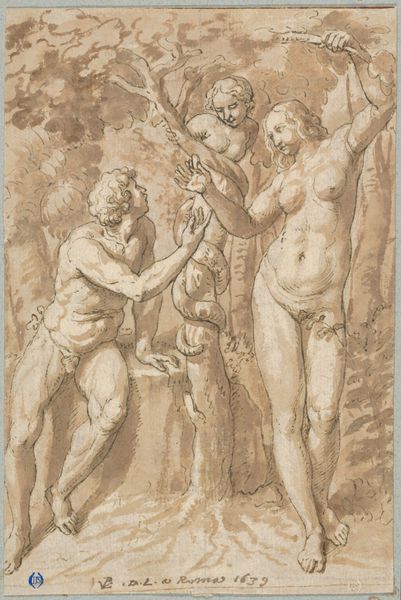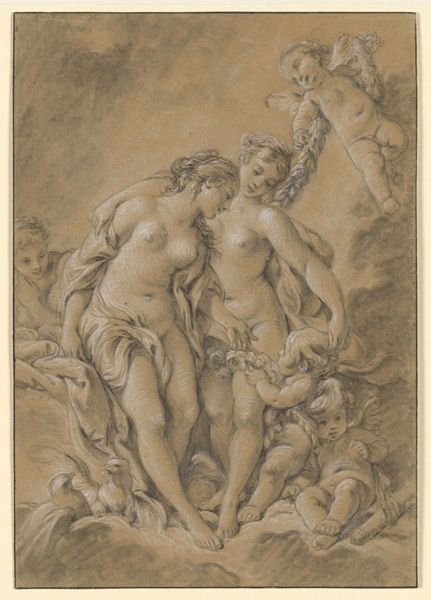
Mars kærtegnende Venus; tv. en amorin, der rækker en krans til hende 1552 - 1615
0:00
0:00
drawing, charcoal
#
drawing
#
allegory
#
charcoal drawing
#
mannerism
#
oil painting
#
portrait drawing
#
charcoal
#
nude
Dimensions: 208 mm (height) x 194 mm (width) (bladmaal)
Curator: Looking at this drawing, it’s hard not to notice the tender scene it portrays, but the tonality makes it feel antique and delicate, even. Editor: Indeed. We're viewing a charcoal drawing called "Mars Caressing Venus," by Hans von Aachen, likely created sometime between 1552 and 1615. What captivates me is the visualization of power dynamics within mythology and art historical settings. Curator: Exactly, consider the erotic and political ramifications within that period. Venus, as the embodiment of beauty and fertility, positioned almost vulnerably. This piece is just dripping with an air of erotic vulnerability but it seems very... staged, like an unfolding theatrical production. What are your thoughts on the institutional frameworks surrounding it? Editor: The artist cleverly uses classical figures to create this intimate tableau, playing with themes of love, war, and power but these mythologies play a key role in social identity and structures as we consider how those elements perpetuate our societal ideals around desirability, beauty, etc. Curator: Absolutely, that cupid on the left is practically shoving a wreath on Venus. A forced gift? An expectation? Consider the male gaze in artistic representation historically and this drawing serves as yet another example of control and ownership, where the act of 'caressing' might be interpreted as a demonstration of male dominance, both in the myth and in the artistic rendering. Editor: Absolutely! Even the Mannerist style which seems like elegant aesthetics only actually further exemplifies these social constraints through its artificiality. Considering that it seems staged reinforces these issues. It also is important that Von Aachen likely produced this to solidify his role within the Habsburg courts and political dynamics of the era. These classical motifs were popular in establishing the ruler’s legitimacy! Curator: Right. And by examining these power structures at play we better see it’s implications on modern art interpretations. I now find myself viewing the piece with fresh eyes. Editor: Agreed, seeing this drawing as part of a broader discourse of art, power, and the societal forces it reflects… I think it gives it enduring, crucial relevance.
Comments
No comments
Be the first to comment and join the conversation on the ultimate creative platform.

